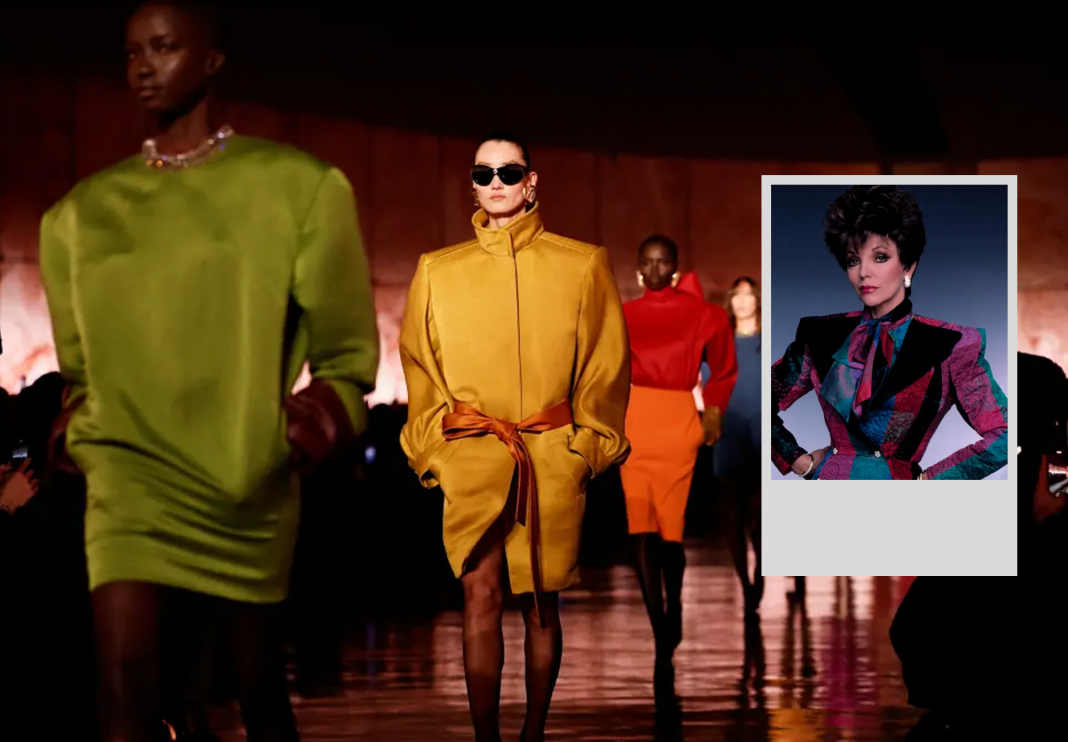Embracing nostalgia and opulence, Generation Z is reviving a bold style movement that channels the striking extravagance of the 1980s and early 1990s. Dubbed “Boom Boom” fashion, this trend shatters the minimalist, quiet luxury aesthetics that have dominated the last decade, opting instead for daring looks that celebrate power, wealth, and self-expression. But beyond the flashy facades, “Boom Boom” fashion also raises important questions about consumerism, body image, and cultural values in today’s rapidly changing social landscape.
The Revival of Excess: What is “Boom Boom” Fashion?
The phrase “Dress for the lifestyle you want, not the lifestyle you have” once captured the flamboyant spirit of 1980s fashion—a time when power dressing, bold silhouettes, and conspicuous consumption ruled the runway and the streets. Today, that ethos is finding new life among Gen Z, as described by writer Emilia Petrarca in The Cut. The emerging “Boom Boom” trend channels the same “fetishization of the past,” invoking the unapologetic extravagance and visible social hierarchy once embodied by iconic looks from TV shows like Dynasty and Miami Vice.

The aesthetic draws heavily on staples such as shoulder-padded blazers, luxurious furs, striking animal prints, oversized gold jewelry, and vibrant color palettes. Rather than subtlety, “Boom Boom” embraces theatricality and boldness, replacing the minimalism that has dominated fashion in recent years with a deliberate show of wealth and status. Yet, while the style nods to glamor and excess, it also stirs debate—some critique the trend as glorifying greed and perpetuating narrow beauty ideals, especially with its lean toward thinness amid ongoing conversations around body inclusivity.
Nostalgia, Power, and Cultural Pushback
At its core, “Boom Boom” fashion can be seen as a reactionary movement. Emerging partly as a rejection of the progressive ideologies that shaped the last decade’s fashion narratives—such as gender fluidity, diversity, equity, and inclusion—it favors a return to more traditionally “luxurious” and gendered sartorial codes. The look’s inspiration from the Alexis Carrington Colby-style power suits worn by Joan Collins on Dynasty highlights a longing for clear symbols of power and hierarchy, which contrasts with the fluid, sometimes ambiguous, styles that gained prominence in the 2010s.

Fashion forecaster Sean Monahan notes this revival of “visible hierarchy” as a key trait, with the trend serving as both a costume and a statement. For many young wearers, it’s about more than just aesthetics—it’s about standing out, claiming confidence, and injecting joy into a fashion scene that, for years, favored quiet understatement. Some observers speculate that “Boom Boom” might represent Gen Z’s version of a new “Roaring Twenties,” pushing back against the muted neutrals and normcore looks that became synonymous with pandemic-era malaise and economic uncertainty.

A Global Surge in Vintage and Luxury
The influence of “Boom Boom” fashion is not confined to the United States. Across the Atlantic, the UK is witnessing a surge in demand for vintage luxury pieces that epitomize the trend’s extravagance. According to The Sun, social media platforms like TikTok have seen a dramatic spike in videos and searches related to vintage fur coats—a key element of the “Boom Boom” wardrobe. Google searches for vintage furs have soared by 688% since January 2023, underscoring a collective appetite for fashion that’s loud, unapologetic, and rooted in history.

This newfound enthusiasm for conspicuous luxury appears to contrast sharply with the “quiet luxury” trend, which advocated for subtlety and discreet displays of wealth. As The Sun highlights, Gen Zers are tired of outfits that whisper affluence; they want their fashion to shout confidence and optimism about the future. This bold sartorial approach may also reflect broader social and economic tensions, including a “cost of living crisis” and a cultural re-embrace of “male-coded values” as noted by Elle UK, which connects the trend to shifting gender norms and political climates.
Fashion as Escapism and Empowerment
For many, “Boom Boom” fashion serves as an antidote to years marked by financial hardship, social restrictions, and the comfort-driven casualness born of the pandemic. The lavish, theatrical style offers a way to reclaim joy and express individuality in an uncertain world. It is no coincidence that the flamboyant looks debuted prominently on Autumn/Winter 2025 runways, signaling a collective desire to step out of the shadows of austerity and monotony.
Celebrity influence has played a crucial role in popularizing the trend. Figures such as Pedro Pascal, often seen sporting dark tartan blazers, and Parker Posey, spotted with her Gucci fur coat and signature handbags, showcase how “Boom Boom” elements have permeated celebrity wardrobes. Rising music star Chappell Roan embodies the aesthetic with her boxy navy suits, ties, and slicked-back hairstyles, amplifying the style’s bold and confident message through her artistry.
Looking Ahead: The Future of “Boom Boom” Fashion
As “Boom Boom” continues to captivate Gen Z and fashion insiders alike, it challenges prevailing norms and invites debate about the role of fashion in society. Is this a fleeting nostalgic revival or a lasting shift toward embracing unapologetic luxury and clear social signaling? While the trend raises critical questions about inclusivity and sustainability, it also underscores fashion’s enduring power to serve as both personal armor and cultural commentary.
What is clear is that the “Boom Boom” movement signals a broader cultural moment where young people are actively shaping fashion to reflect their hopes, frustrations, and identities. By revisiting the flamboyance of past decades, Gen Z is not only dressing for a desired lifestyle but also staging a dramatic, colorful assertion of their place in an evolving world.



